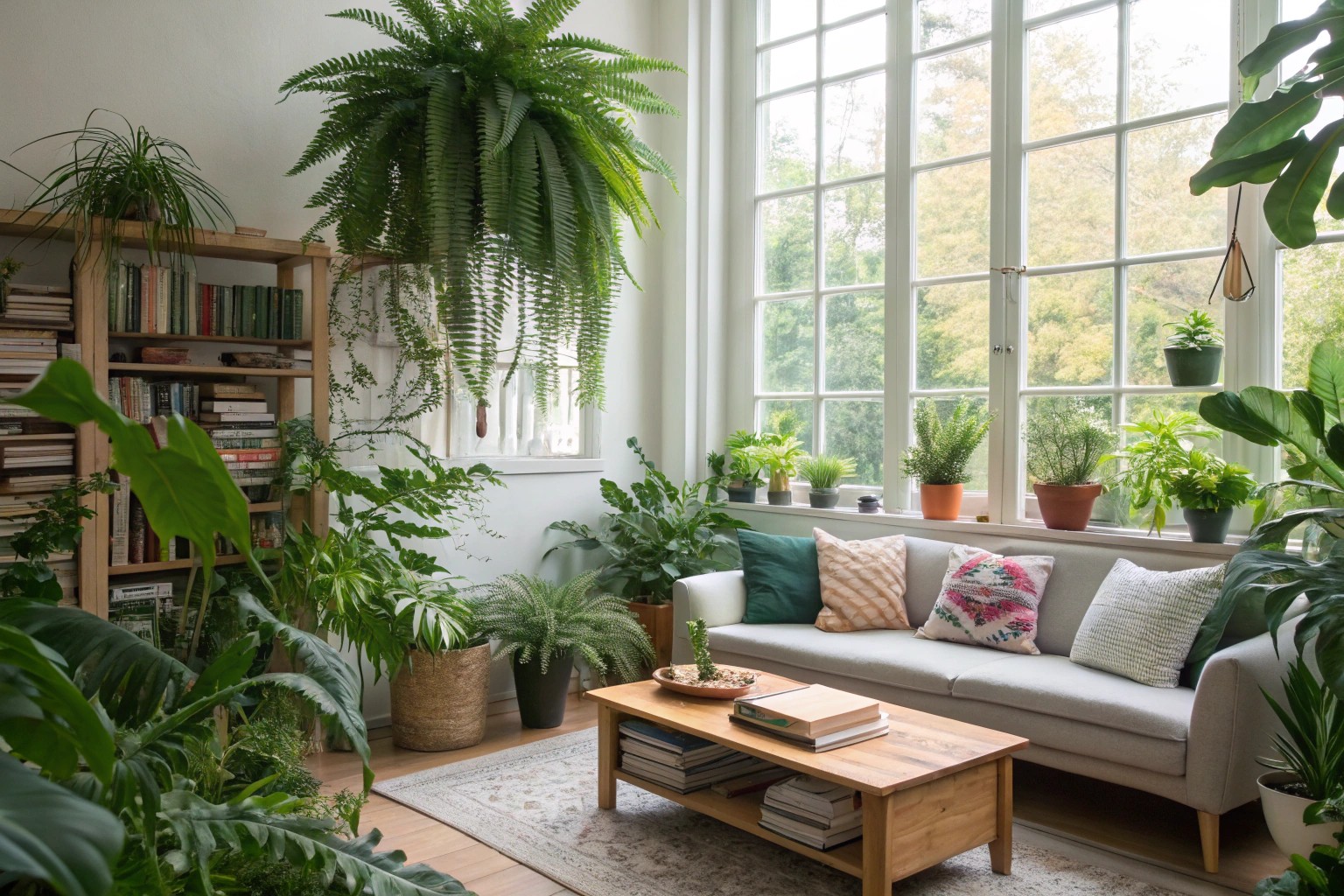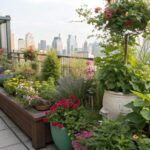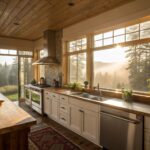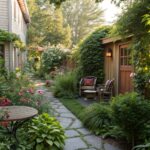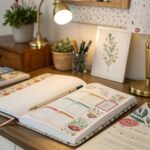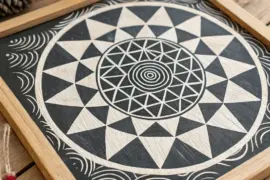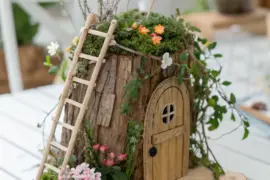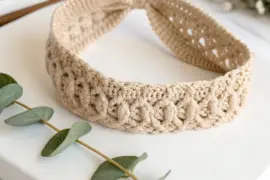After years of working with clients across diverse spaces, I’ve witnessed how strategically placed houseplants can transform even the most uninspired rooms into dynamic, vibrant environments. The secret lies in understanding how to leverage height and texture—two powerful elements that can elevate your interior landscape from ordinary to extraordinary. This guide takes you through practical approaches to styling with houseplants to create spaces that feel both designed and organically evolved.
The Strategic Power of Height in Plant Styling
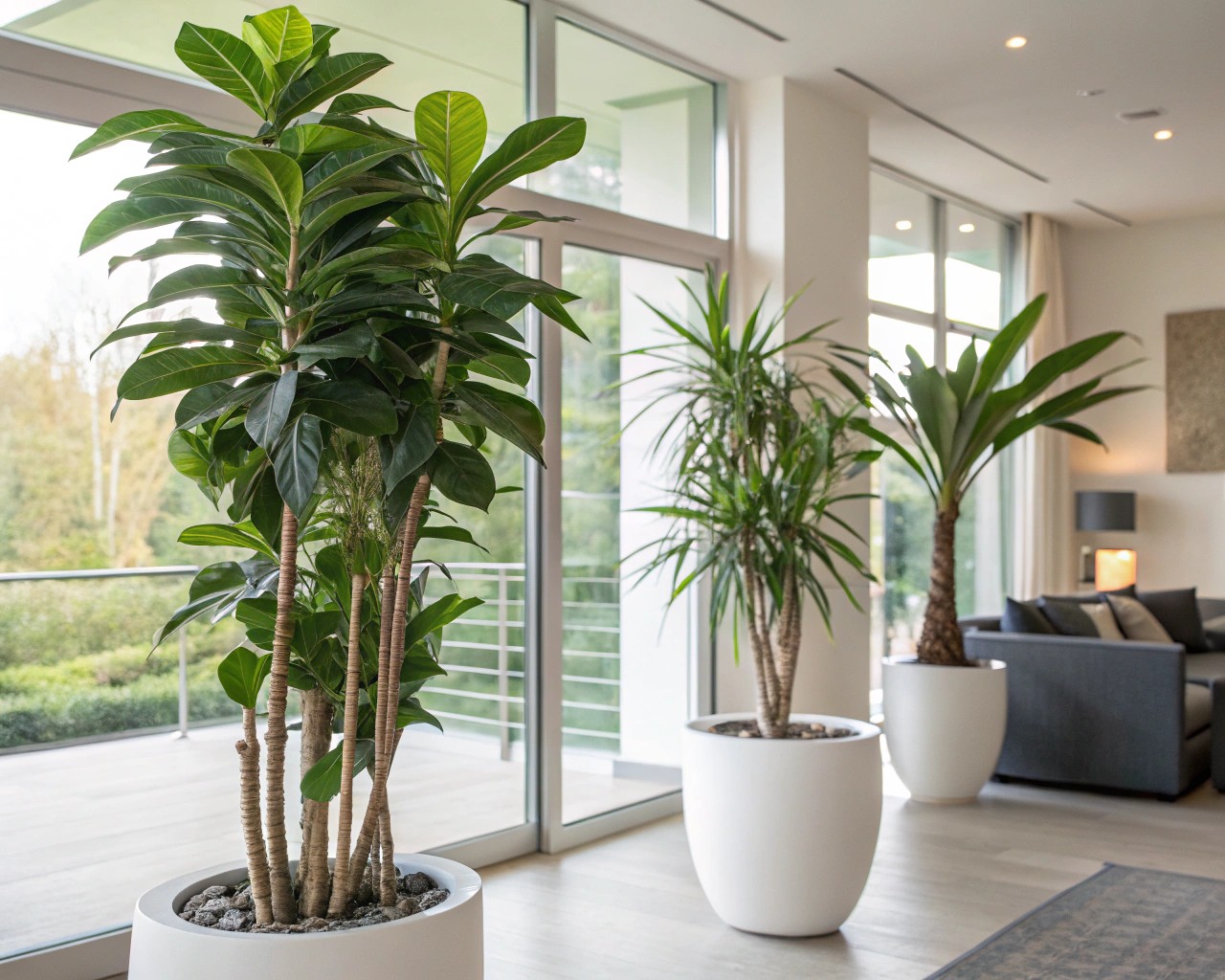
Height variation creates visual interest and establishes natural focal points throughout your space. When working with clients, I often notice how their rooms transform completely once plants of different heights enter the picture.
Tall Statement Plants
Tall houseplants immediately command attention and create a sense of grandeur in any space. They work particularly well in areas with high ceilings or empty corners that need enlivening.
Some exceptional tall houseplants include:
- Fiddle Leaf Fig (Ficus lyrata) – The undisputed star of tall houseplants with its dramatic, violin-shaped leaves that can reach impressive heights of 6-10 feet indoors
- Dracaena marginata (Dragon Tree) – Offers a sculptural, architectural presence with its slender trunk and spiky foliage, potentially reaching 8 feet tall
- Bird of Paradise (Strelitzia reginae) – Creates a dramatic tropical statement with its paddle-shaped leaves, growing up to 5-6 feet indoors
- Yucca elephantipes – A spineless variety perfect for indoor spaces that can reach 3-5 meters depending on your ceiling height
Creating Height Variation
When styling a client’s home in Portland last year, we transformed a flat, uninspiring living room by introducing plants at three distinct levels. You can replicate this approach by:
- Ground level – Large floor plants or those on short stands (0-2 feet)
- Mid-level – Table-top plants, console arrangements (2-4 feet)
- High level – Tall statement plants or hanging arrangements (5+ feet)
“When styling indoor plants or any décor for that matter – arrange your objects in a visual triangle,” with the tallest object in the middle creating a pleasing composition.
Table: Choosing Plants by Height Requirements
| Space Limitation | Recommended Plant Types | Height Range | Special Considerations |
|---|---|---|---|
| Low ceilings | ZZ Plant, Chinese Evergreen, Pothos | 1-3 feet | Choose plants with horizontal spread |
| Standard height (8-9ft) | Fiddle Leaf Fig, Rubber Plant, Monstera | 4-6 feet | Allow space for growth |
| High ceilings/lofts | Dracaena, Kentia Palm, Bird of Paradise | 6-10 feet | Consider mature height in selection |
| Limited floor space | Banana Plant, Areca Palm, Yucca | 3-6 feet | Look for tall, slender varieties |
The Art of Texture in Plant Design
Texture creates depth, contrast, and visual rhythm in your spaces. I’ve found that combining different leaf textures can make even a monochromatic green plant collection feel rich and diverse.
Mixing Leaf Textures
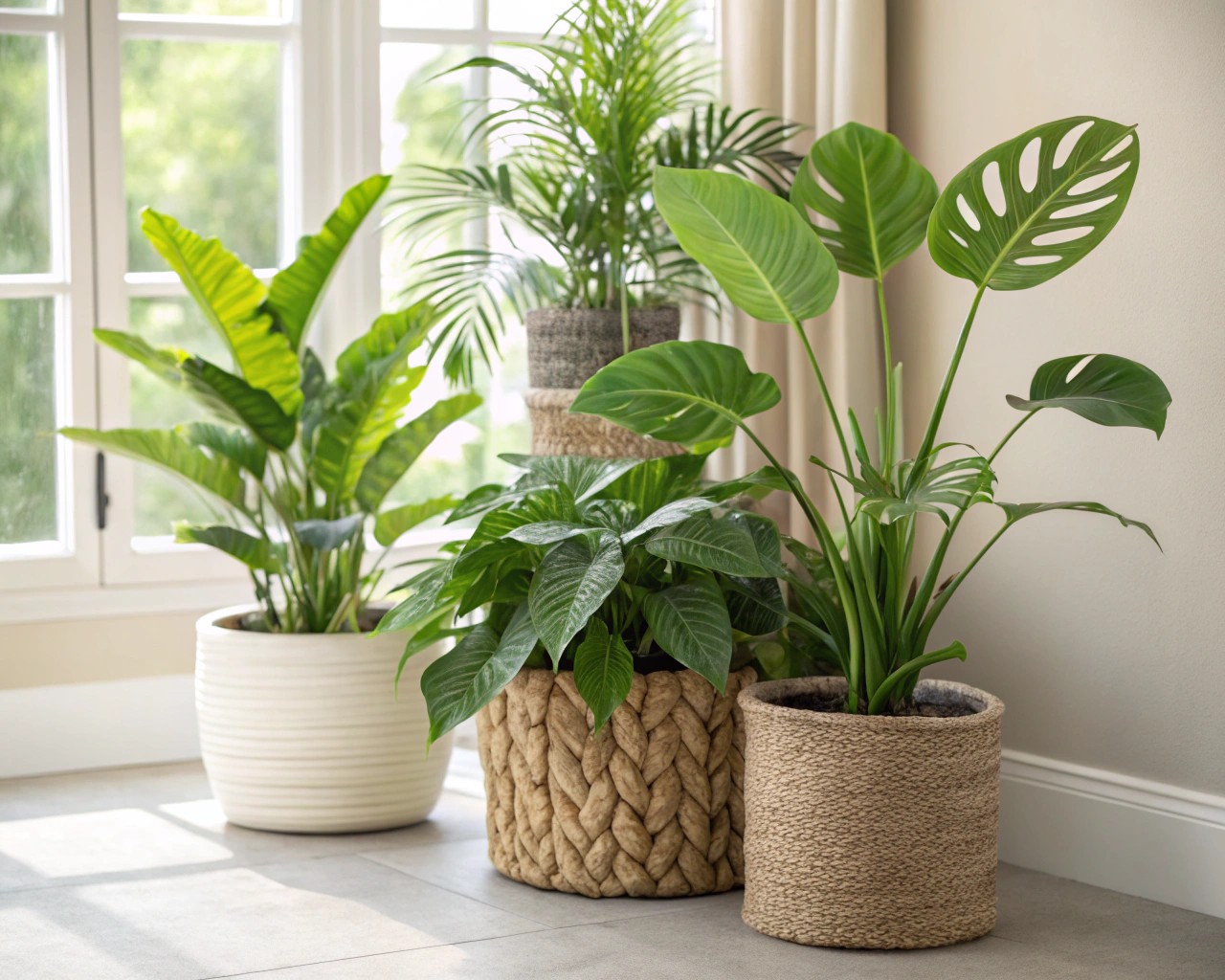
For a visually interesting composition of plants, mix and match different textures and forms. You could combine the bold, statement-making leaves of a Fiddle Leaf Fig with the delicate fronds of a Maidenhair Fern. The interplay of textures adds depth and character to your space.
When working with a minimalist space in Boston, we created interest despite a limited color palette by combining:
- Large, glossy-leaved plants (Rubber Plant)
- Feathery, airy plants (Ferns)
- Structural, architectural plants (Snake Plant)
- Cascading, trailing plants (Pothos or String of Pearls)
Using Texture as Visual Counterpoint
Plants with interesting textures can provide contrast to your existing furniture and finishes:
- Soft, fuzzy plants like Velvet Calathea against sleek, modern furniture
- Spiky, structural plants like Sansevierias with plush, comfortable seating
- Rippled or crinkled leaf plants near smooth surfaces
Strategic Placement for Maximum Impact
The positioning of your plants is crucial—both for their health and visual impact.
Grouping vs. Scattering
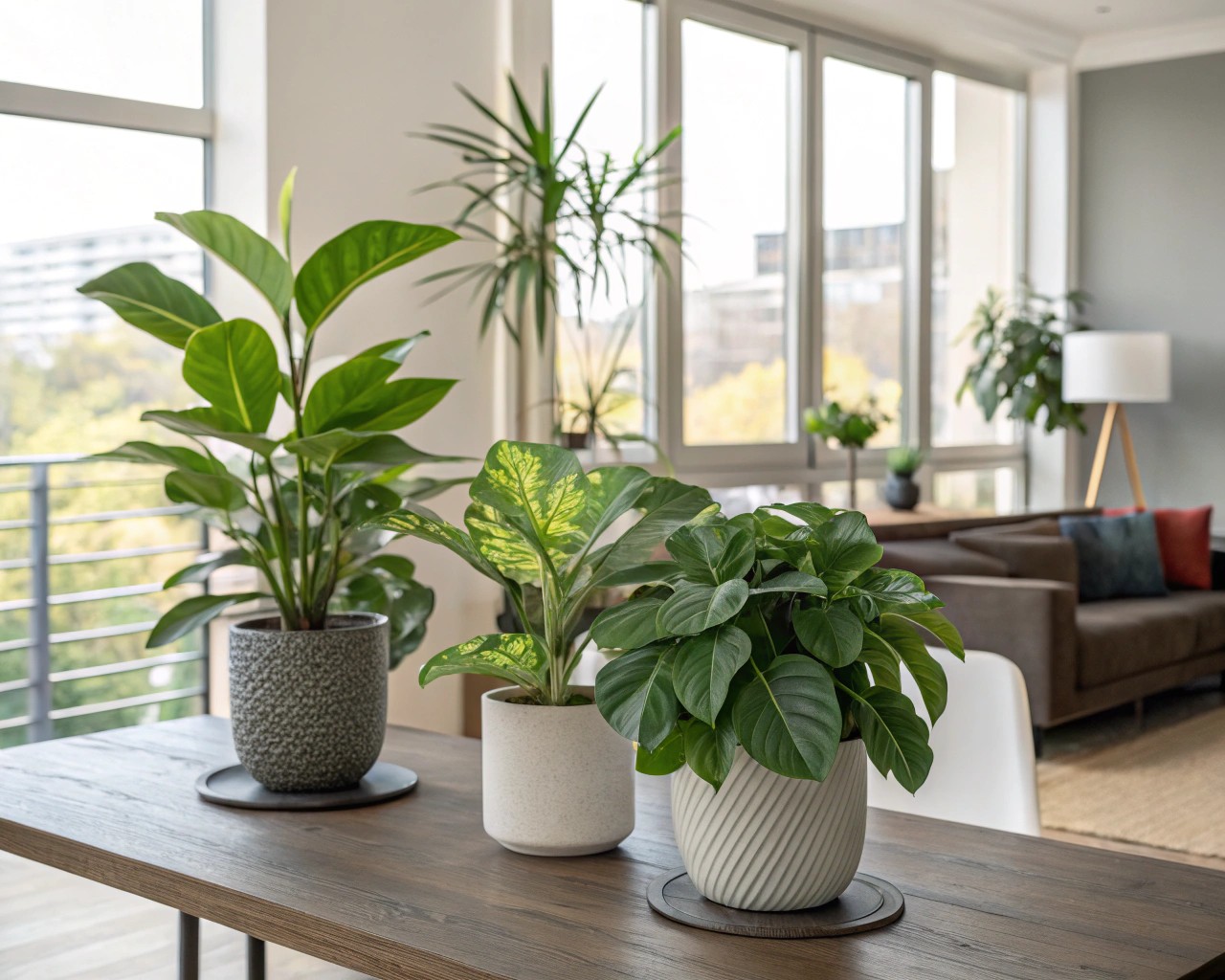
The most important tip for styling houseplants in your interior is to group them. Instead of scattering plants throughout the entire space, focus on creating a few intentional clusters of greenery. These groupings not only bring a sense of calm and organization to your home but also allow you to make bold, eye-catching statements with your plants.
When I redesigned a client’s open-concept apartment, we transformed the space by creating three distinct plant groupings instead of the dozen scattered plants they previously had. The result was a more intentional, designed feel that actually made the space seem larger.
Creating Focal Points
Large, statement plants can serve as natural centerpieces, drawing attention and anchoring the overall design scheme. In my recent projects, I’ve been using:
- Tall Fiddle Leaf Figs to anchor living room corners
- Dramatic Bird of Paradise plants at the end of hallways
- Clustering three medium-sized plants of varying heights on a credenza
- Using a single spectacular specimen to draw the eye toward a favored view or architectural feature
Light-Based Placement
All plants need light, but depending on the type of plant, it will need varying levels of light. For example, snake plants are well adjusted to low-lit spaces, making them perfect for a room that’s a bit darker.
Pro tip: I always ensure my plants “can see the sky” so they’re living in a place that mimics their natural environment. This simple rule has drastically improved my success rate with finicky plants.
Vertical Opportunities: Beyond Floor Plants
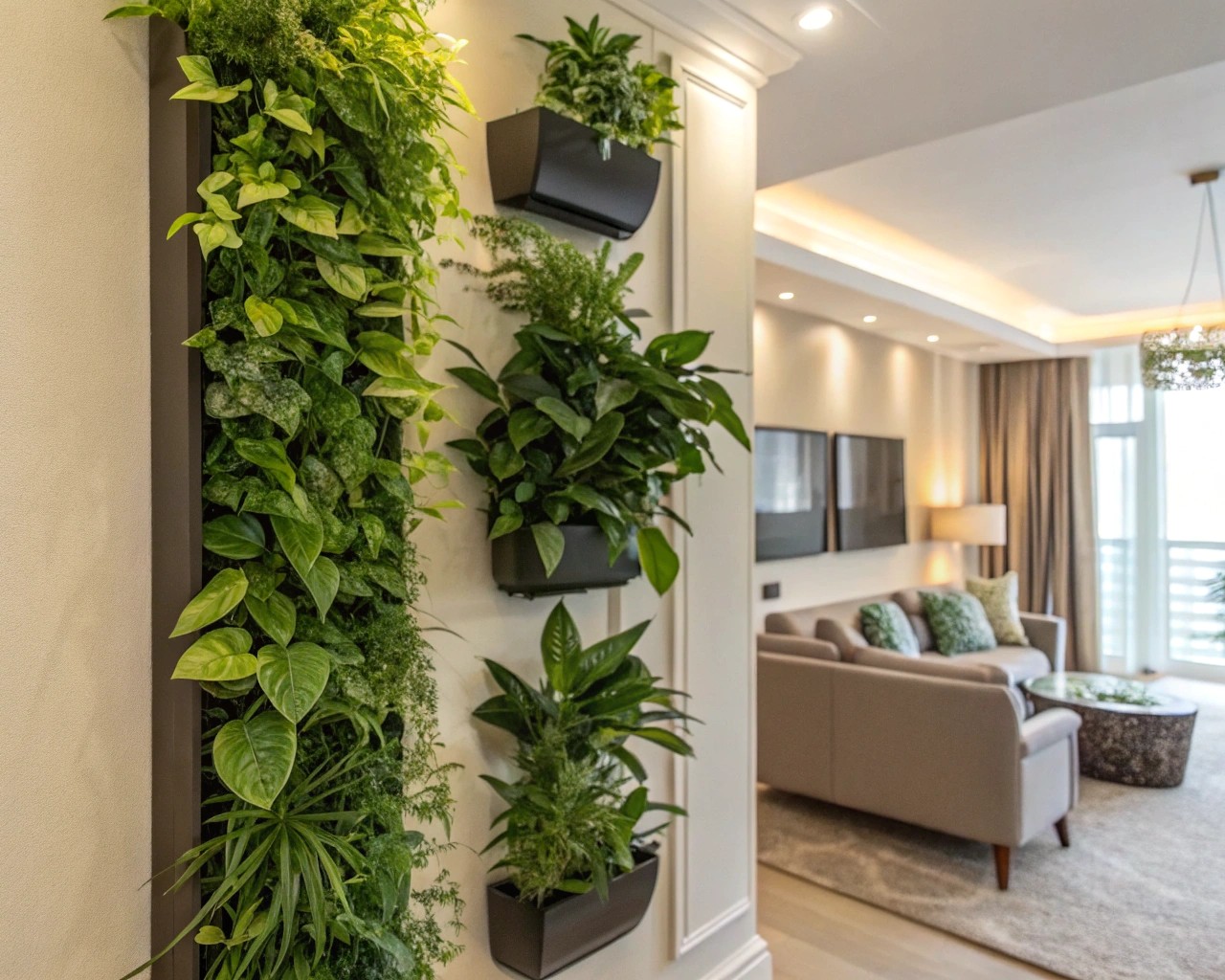
Don’t limit yourself to floor and table space—walls and ceilings offer abundant styling opportunities.
Hanging Planters
Hanging planters are a great way to add greenery to a room without taking up valuable floor space. They can be hung from the ceiling or mounted on the wall. Some popular hanging plant options include:
- Spider plants with their cascading babies
- Pothos with trailing vines
- String of Pearls for dramatic draping
- Boston Ferns for lush fullness
Creating Vertical Gardens
Vertical gardens are a fantastic way to bring the outdoors inside. They can be created using a variety of materials, such as pallets, gutters, or hanging planters. When I designed a vertical garden for a restaurant client, we used:
- A mix of herbs for kitchen use and fragrance
- Small ferns for texture and moisture
- Succulents for low-maintenance areas
- Pothos and Philodendrons for trailing elements
Case Studies: Height and Texture in Action
The Empty Corner Transformation
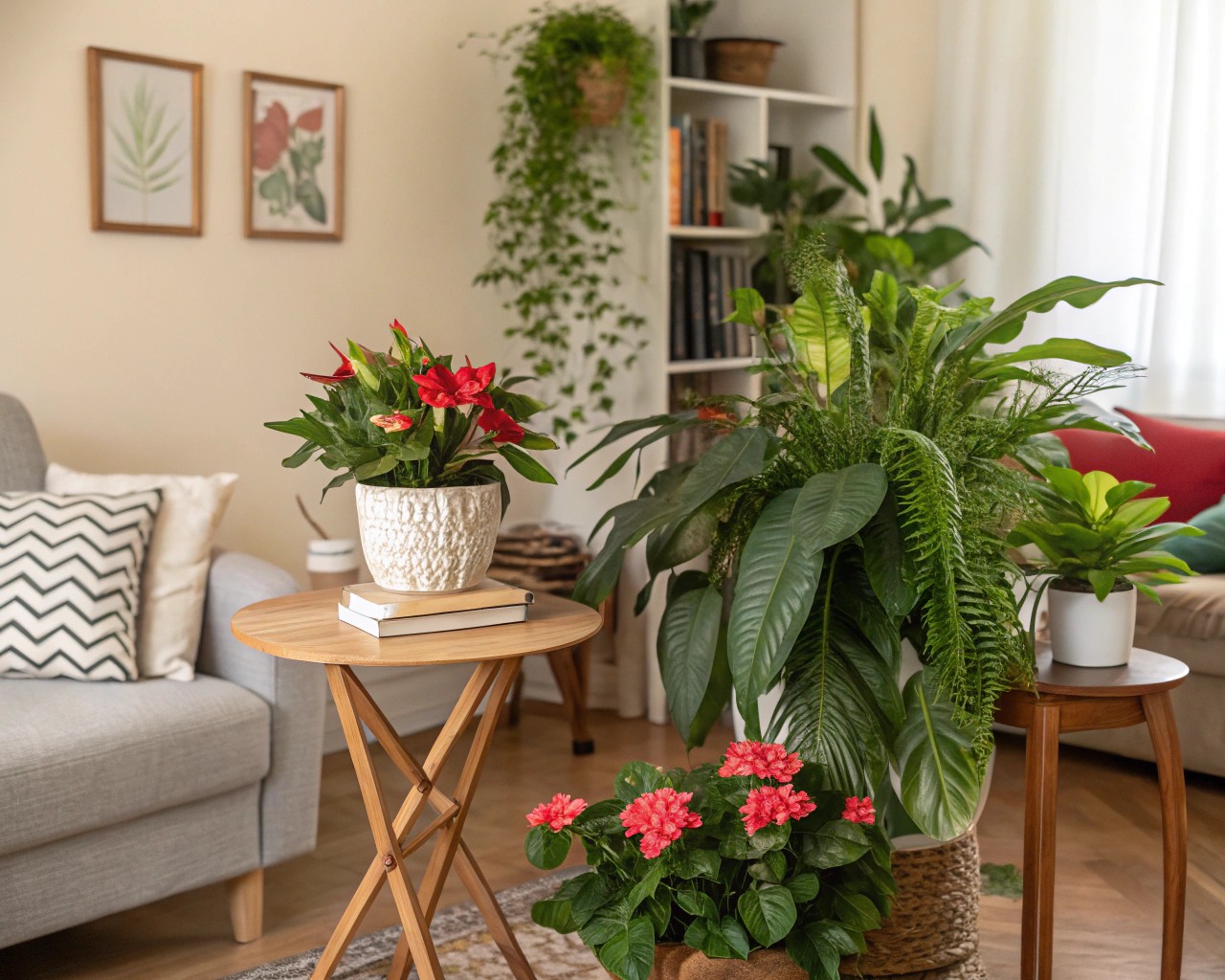
A client in Chicago had a 12-foot ceiling living room with a barren corner that felt unfinished. We introduced:
- A 7-foot Kentia Palm as the anchor
- Mid-height Monstera on a 24-inch stand for middle interest
- Clustered small pothos and peperomias at the base
- A hanging air plant for unexpected high interest
The varying heights created a natural, forest-like vignette that drew the eye upward and made the ceiling feel even higher.
The Open Concept Divider
For a loft apartment with an open floor plan, we used plants as natural dividers:
- A row of three staggered-height Dracaenas created a semi-transparent partition
- Varying pot heights added to the dimension
- Contrasting leaf textures (smooth, striated, and ruffled) added visual interest
- The arrangement delineated spaces without blocking light or views
Plant Selection Strategy
Matching Plants to Space Conditions
I always ask questions about the home, office or whatever setting the plant will be living in—whether the space will receive sunlight or has only artificial light—to assess the plant’s needs. ZZ plants, pothos and Chinese evergreens thrive in lower light.
When working with high-end clients, I’ve noticed they typically prefer larger, more impactful plants. “They are impatient about watching their plants grow; they want more instant gratification. They want beautifully designed spaces, and they are prepared to invest in more mature plants.”
Finding Plants for Your Lifestyle
A list of plants based on care requirements:
For busy professionals with limited time:
- Snake Plants
- ZZ Plants
- Pothos
- Chinese Evergreen
For patient plant enthusiasts:
- Fiddle Leaf Fig
- Bird of Paradise
- Orchids
- Calathea varieties
For homes with pets/children:
- Boston Fern
- Spider Plant
- Parlor Palm
- Christmas Cactus
Creating Cohesive Plant Design
Integrating with Existing Decor
House plants should be among the first decisions you make when decorating. Determine your lighting conditions, the type of plants you desire (that are compatible with your lighting conditions), and how large you want them to grow. Once this is established, you know exactly how much room needs to be allowed and where to allow it. Furniture can then be planned accordingly.
In my own home, I’ve found moving plants seasonally helps them thrive: “I move my plants around my home to observe which windows they like; I play with them like decor pieces, adding them to accessories in shelves, on table tops, and windowsills.”
Pot Selection for Cohesive Design
Selecting the right planter is as important as the plant itself. When working with contemporary spaces, I use ceramic pots with geometric patterns or bright colors to add character. Elevated stands lift plants, giving them a presence in the space and improving the visual flow of a room.
Creating Mini Landscapes
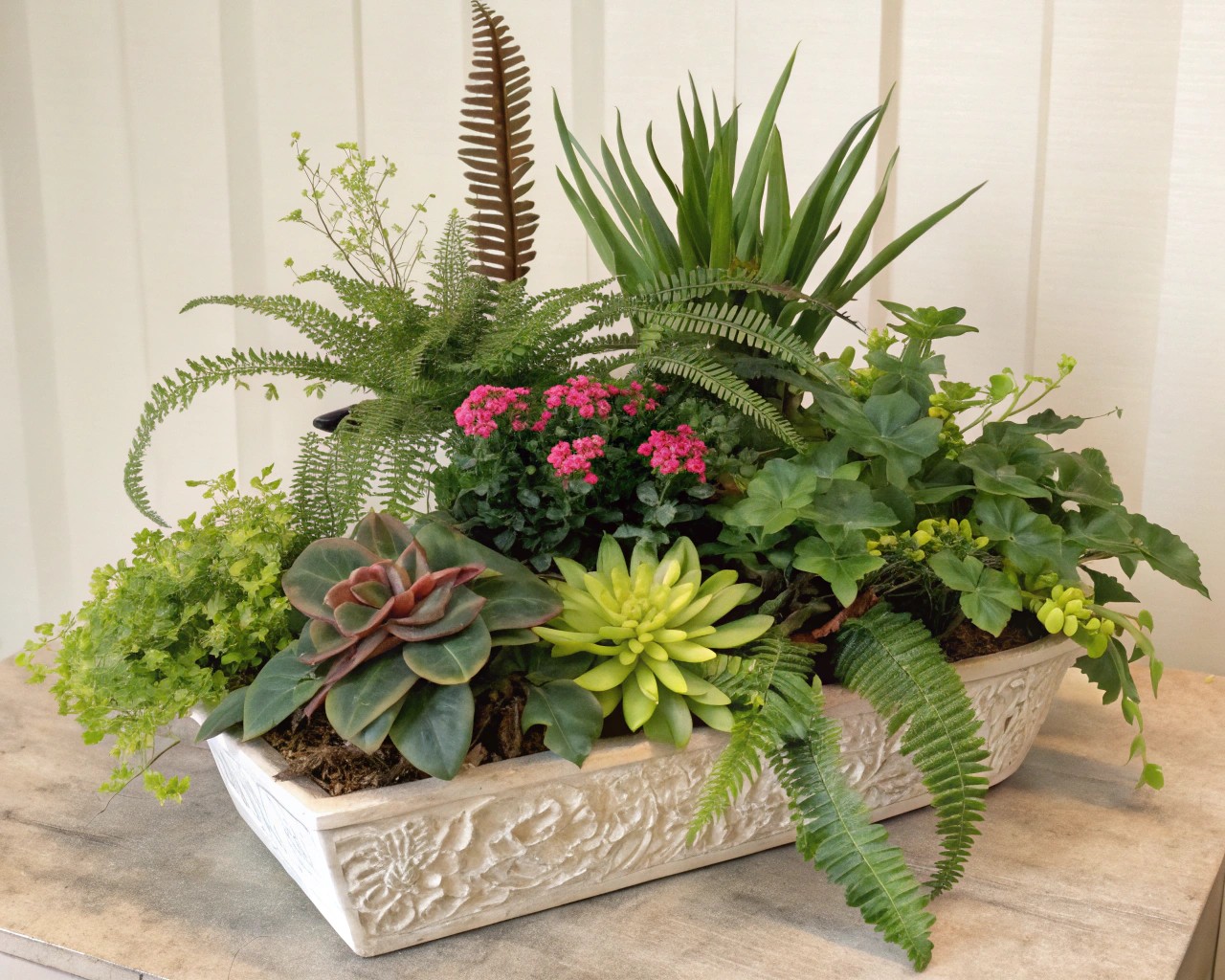
One of the most fulfilling approaches I’ve found is to “create mini landscapes indoors” by pairing complementary plants in upgraded pots, creating multi-use plant combinations that can serve as centerpieces for special gatherings and later transitions to permanent home displays.
Practical Care Tips for Styled Plants
While styling is important, the health of your plants remains paramount for long-term success.
Light Management
Strategic placement of plants can help make focal points and divide spaces within an interior. For maximum success:
- Monitor seasonal light changes and adjust plant positions accordingly
- Use grow light bulbs in designer lamps if lighting is an issue
- Rotate plants regularly for even growth
- Consider light-reflecting surfaces to maximize available light
Creating a Care Plan
When you buy a plant, it comes with a tag outlining the care plan for its specific needs—for example, the label will specify whether it likes indirect light or sun exposure all day long, and how often you should water it.
While these care plan tags are helpful to understand the basic needs of your plant, I recommend adapting the routine depending on your specific environment.

